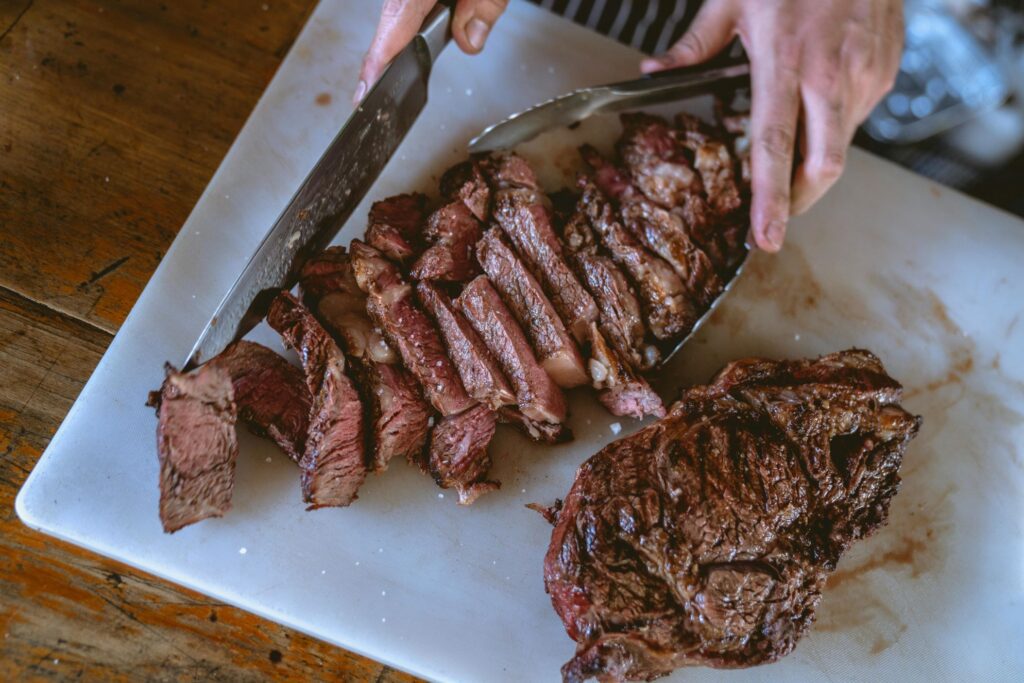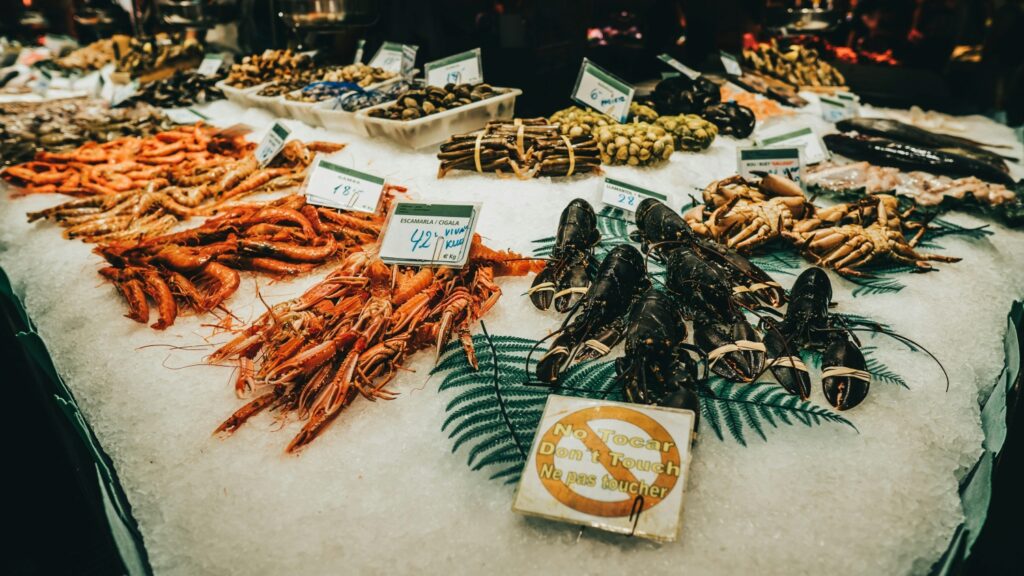Let’s talk about food safety, keeping our kitchens safe, and our bellies happy. Whether you’re whipping up some chicken curry or frying plantain, these tips will help you keep everything clean and safe.
Cooking Temperatures
Getting that perfect cook on your meat, eggs, and fish is important, but so is making sure it’s safe to eat. While some recipes may call for specific doneness levels, it’s important to prioritize safety, especially for individuals with weakened immune systems. Familiarize yourself with recommended cooking temperatures to ensure that your meals are both delicious and safe to eat. Here’s a quick rundown:
Cooking beef to the right temperature is essential to prevent foodborne illness. Use a meat thermometer can help ensure your beef is cooked to a safe temperature:

Summary
Ensure safety by cooking chicken to 165°F (74°C), ground meats to 160°F (71°C), fish to 145°F (63°C), and eggs until firm. For beef, aim for 120-160°F (49-71°C) depending on your preferred doneness.
Storage Tips for Freshness
Proper storage is essential for preserving the quality and safety of your food. Maintain optimal refrigerator and freezer temperatures to prevent spoilage and foodborne illness. Follow these storage tips to keep your perishables fresh and safe for consumption:
Summary
Keep those fridge doors shut, stash perishables on top, raw meats down low, use a thermometer, and freeze meat if you’re not cooking it in two days.
Maintain a Clean Kitchen Environment
A clean kitchen is essential for preventing the spread of harmful bacteria and ensuring food safety. Here’s how to keep things spick and span:

Summary
Keep your kitchen safe: wash hands, clean surfaces, change sponges often, and use separate cutting boards for raw and cooked foods.
Avoid the Danger Zone
The “danger zone” refers to temperatures between 40 and 140 degrees Fahrenheit, where bacteria multiply rapidly. Take precautions to minimize the time food spends in this temperature range to reduce the risk of foodborne illness:
Summary
Avoid the “danger zone” (40-140°F) where bacteria thrive.
Handle Foods with Care
Proper handling of raw meat, poultry, and eggs is essential for preventing contamination and foodborne illness. Follow these guidelines to minimize the risk of cross-contamination:

Summary
To avoid contamination, separate raw and cooked foods.
Smart Shopping for Meat, Fish & Seafood
Choose high-quality ingredients to ensure the safety and freshness of your meals. Follow these tips when purchasing meat, fish, and seafood:

Summary
Choose top-quality ingredients for freshness and safety.
Think You Have a Food Illness?
Foodborne illnesses can hit anyone, anywhere, and at any time. Whether you’re enjoying a delicious homemade curry or dining out, it’s crucial to recognize the signs of food poisoning and know what steps to take. Here’s your quick guide on what to do if you think you’ve fallen ill from something you ate:
Get Medical Help: Call your health care provider immediately and seek medical attention. Early intervention can prevent complications and speed up recovery.
Save and Report: Keep the food package, can, or carton. Reporting the issue helps prevent others from getting sick. Here’s who to contact based on your location:
Reminder:
Check the United States Food and Drug Administration (FDA) for the most up to date information.
Know the Risk: Anyone can get food poisoning, but some folks are more at risk:
Symptoms to Watch For: Knowing the symptoms of food poisoning can help you act quickly:
Home Remedies and Prevention: While seeking medical advice is crucial, here are some home remedies and prevention tips:
Remember, prevention is key. Practice safe food handling, cook food to the right temperatures, and be mindful of cross-contamination in your kitchen. Stay informed, stay safe, and enjoy your meals knowing you’ve taken steps to keep everyone safe. Happy cooking!
Summary
If you suspect food poisoning, seek medical help promptly and keep the food packaging for reporting.
Top Kitchen and Food Safety Questions Answered
How can I tell if my refrigerator is cold enough?
Ensure your fridge temperature is consistently below 40°F (4°C) by using a refrigerator thermometer.
Can I leave food out to cool before putting it in the fridge?
It’s safer to cool hot foods quickly and place them in the fridge within two hours to prevent bacterial growth.
Is it safe to defrost meat on the counter?
No, it’s best to defrost meat in the refrigerator, under cold running water, or in the microwave to avoid the danger zone (40°F – 140°F).
How long can leftovers stay in the fridge?
Leftovers should be consumed within 3-4 days to ensure they are safe to eat.
Can I use the same cutting board for meat and vegetables?
It’s recommended to use separate cutting boards for raw meats and vegetables to prevent cross-contamination.
What should I do if I accidentally eat undercooked meat?
Monitor yourself for symptoms like nausea or diarrhea. If symptoms occur, seek medical advice.
How often should I clean kitchen towels and sponges?
Wash kitchen towels and sponges frequently, ideally daily, to prevent bacteria buildup.
Do I need to wash fruits and vegetables if I’m going to peel them?
Yes, washing fruits and vegetables before peeling or cutting helps remove dirt, bacteria, and pesticides that could transfer to the inside.
What’s the safest way to reheat leftovers?
Reheat leftovers until they reach an internal temperature of 165°F (74°C) to kill any bacteria.
How can I prevent cross-contamination in my kitchen?
Use separate cutting boards, utensils, and plates for raw meats and ready-to-eat foods. Wash hands thoroughly after handling raw meats.










